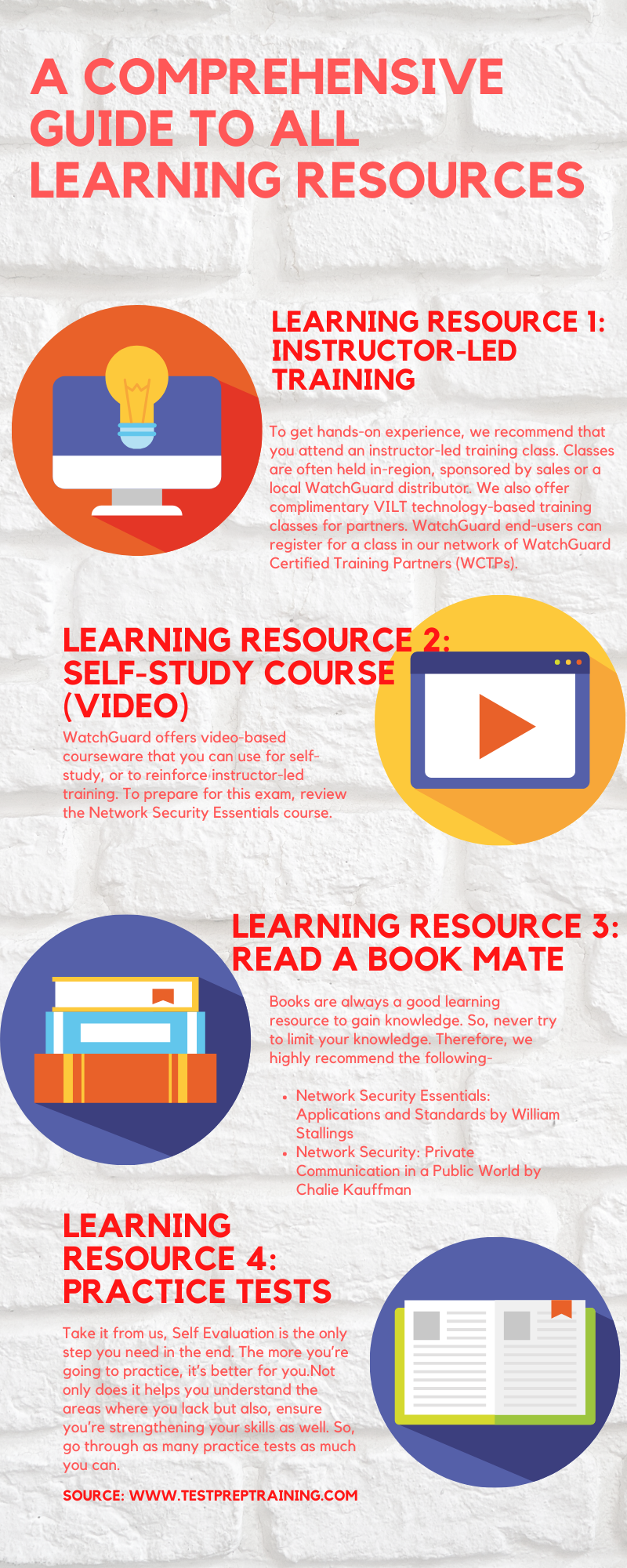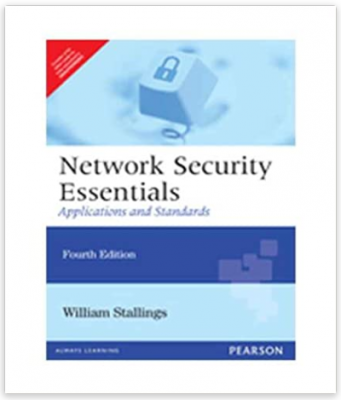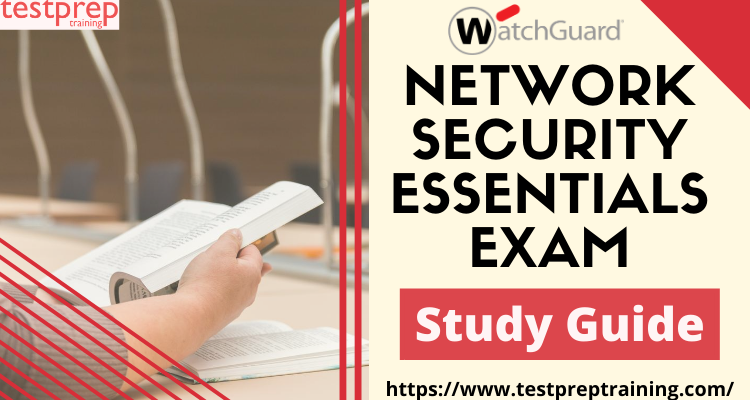The Network Security Essentials Exam is a certification exam offered by CompTIA, a leading provider of IT certifications. This exam is designed to validate the knowledge and skills of IT professionals in the area of network security. It covers various topics related to network security, including network threats, vulnerabilities, and attacks, as well as network security tools, technologies, and best practices.
The Network Security Essentials Exam is intended for individuals who have some experience in the field of IT and who want to demonstrate their expertise in network security. It is recommended for network administrators, security professionals, and IT technicians who are responsible for securing corporate networks.
Network Security Essentials Glossary
Here are some key terms and concepts related to network security that you may encounter on the Network Security Essentials exam:
- Firewall: A security tool that watches and manages the flow of data in and out of a network, following specific rules.
- Intrusion Detection System (IDS): A security tool that watches network traffic for any unusual or known attack patterns.
- Encryption: The process of converting data into a format that cannot be easily read or understood without the use of a decryption key.
- Virtual Private Network (VPN): A system that lets users connect safely to a distant network through an insecure public network, like the Internet.
- Access Control: The process of granting or denying access to network resources based on the identity and permissions of the user or device.
- Vulnerability: A flaw in a network or system that attackers can use to get in without permission or cause harm.
- Risk Assessment: The process of identifying, analyzing, and evaluating potential risks to a network or system.
- Authentication: Checking who a user or device is before letting them use network resources.
- Malware: A type of software that is designed to harm or exploit a network or system, such as viruses, Trojans, and ransomware.
- Social Engineering: A strategy used by attackers to deceive or control users into giving away important information or allowing access to network stuff.
- Denial of Service (DoS): A type of attack that floods a network or system with traffic or requests, causing it to become unavailable to legitimate users.
- Incident Response: The process of responding to and mitigating the effects of a security incident, such as a network breach or malware infection.
Network Security Essentials Exam Guide
The Network Security Essentials Exam is offered by CompTIA, and you can find official exam resources and study materials on their website. Here are some helpful links:
- Exam Objectives: The exam objectives provide a detailed breakdown of the topics and skills covered on the exam. You can find the exam objectives on the CompTIA website: https://www.comptia.org/certifications/security.
- Study Materials: CompTIA provides different study materials like books, practice exams, and online classes to assist you in getting ready for the test. You can find these resources on the CompTIA website or on their certification marketplace: https://www.comptia.org/certifications/security.
- Exam Voucher: You can buy an exam voucher from CompTIA. This voucher lets you plan and take the test at a Pearson VUE testing center. You can purchase an exam voucher on the CompTIA website: https://www.comptia.org/certifications/security.
- Certification Community: The CompTIA certification community is a great resource for connecting with other IT professionals, asking questions, and sharing study tips and resources. You can join the community on the CompTIA website: https://www.comptia.org/community/certification-forums/security.
Network Security Essentials Exam Tips and Tricks
Here are some tips and tricks to help you prepare for and pass the Network Security Essentials Exam:
- Study the Exam Objectives: The exam objectives provide a detailed breakdown of the topics and skills that will be cover on the exam. Make sure you understand each objective and can demonstrate the necessary knowledge and skills.
- Use Official Study Materials: Use official study materials provided by CompTIA, such as study guides, practice tests, and online courses. These materials are design to help you prepare specifically for the exam and ensure that you are covering all the necessary topics.
- Practice with Real-World Scenarios: Network security is a complex and evolving field, so it is important to understand how to apply your knowledge to real-world situations. Look for practice scenarios and simulations that simulate real-world network security scenarios and practice applying your knowledge in these scenarios.
- Understand Common Network Security Tools: There are many different tools and technologies used in network security, such as firewalls, IDS/IPS, VPNs, and encryption. Make sure you understand how each tool works and how they are use in different network security scenarios.
- Take Practice Tests:
- Taking practice tests can help you check how well you know the exam topics and find out where you might need to study more. CompTIA has official practice tests, or you can look for practice tests from different places.
|Network Security Essentials Study Guide
Access to the right learning resources is of utmost importance when it comes to the preparations. You need to be determined and consistent enough to ace the exam. Moreover, you should begin early and devise a strategy for your preparations. This study guide enlists all the necessary resources and steps for you to clear the exam. Lets discuss!

Review all the Network Security Essentials Exam Objectives
When you start getting ready for the Network Security Essentials exam, the initial step is to go to WatchGuard’s Official Website. Also, ensure you go over all the exam objectives. Going through the exam objectives will give you a better understanding of the exam and boost your confidence. This step is the basis of your exam preparation, so start with the official website and then explore other resources. The WatchGuard Network Security Essentials certification exam covers 6 course doamins as a part of its syllabus namely-
Domain 1: Network and network security basics (10%)
This domain covers IPv4 addresses, subnetting and routing, Network Address Translation and packet headers (TCP, IP, HTTP). The MAC addresses and Network services, ports, and protocols are also include.
Domain 2: Administration and setup (10%)
This domain includes concepts like Firebox default policies and network settings. It also covers Fireware Web Setup Wizard, Feature keys, Firebox backup and restore. Moreover it focuses on Configuration file migration and Default threat protection.
Domain 3: Monitoring, logging and reporting (15%)
This domain emphasizes on Tools to monitor Firebox status and activity, Diagnostic tools in Firebox System Manager and Firebox logging to Dimension or WatchGuard Cloud. Further it also covers Firebox log messages and Logging settings.
Domain 4: Networking and NAT (25%)
This domain covers topics like Network interface types, security zones, and settings, WINS/DNS, Routing and static routes. It also includes the NAT types and configuration, DHCP, VLANs, Multi-WAN and SD-WAN actions.
Domain 5: Policies, proxies, and security services (25%)
Further, in tis domain there are concepts related to Packet filter policies and proxy policies, Policy precedence and HTTP proxy. It also includes HTTPS proxy content inspection, Content actions and domain name rules and Firmware subscription security services.
Domain 6: Authentication and VPNs (15%)
Lastly, this domain focuses on the understanding of Authentication servers, Users and groups in policies, Firebox authentication portal and Mobile VPN routing options and protocols. Also, it includes the Branch Office VPN gateways and tunnel routes, Branch Office VPN and NAT and The BOVPN virtual interfaces.
Learning Resource 1: Instructor-Led Training
This particular course offers all the skills you need to gain in order to qualify the examination. A certification is incomplete without training. Even the Network Security Essentials certification preparatory guide highlights the importance of WatchGuard Network Security Essentials Training.
To get hands-on experience, we recommend that you begin with an instructor-led training class. Classes are often held in-region, sponsored by sales or a local WatchGuard distributor. We also offer complimentary VILT technology-based training classes for partners. WatchGuard end-users can register for a class in our network of WatchGuard Certified Training Partners (WCTPs). n Partners — Register for training here (login required) n End-users — View the current WCTP training schedule on the WatchGuard website
Learning Resource 2: Self-Study Course (Video)
WatchGuard offers video-based courseware that you can use for self-study, or to reinforce instructor-led training. To prepare for this exam, review the Network Security Essentials course. Also it offers the following online resources-
Online Help
The Online Help systems provided for the various WatchGuard Fireware management tools include detailed information to expand on the principles presented in the WatchGuard Network Security Essentials training courseware. For the knowledge categories included in the Assessment Objectives section, we recommend that you review the corresponding content in the appropriate Help system. You can find Fireware Help in the WatchGuard Help Center.
Configuration Examples
Fireware configuration examples provide instructions to set up your Firebox for specific business purposes. Each example includes reference configuration files that show the final setup for each feature used in that scenario. Further, it also includes a guide to cover the details of each configuration. You can use these configuration examples to help expand your understanding of Fireware, as it relates to the knowledge categories specified in the Assessment Objectives section. You can find the Configuration Examples on the WatchGuard website documentation pages: Configuration Examples
Learning Resource 3: Read a Book Mate

Books are a valuable resource for learning and gaining in-depth knowledge. They offer a deep understanding of the exam topics, so it’s important not to restrict your learning. We strongly suggest the following books as study guides for the WatchGuard Network Security Essentials exam:
- Firstly, Network Security Essentials: Applications and Standards by William Stallings
- Secondly, Network Security: Private Communication in a Public World by Chalie Kauffman
Learning Resource 4: Practice Tests
Once you complete your preparations it the time for WatchGuard Network Security Essentials practice exam tests. Take it from us, Self Evaluation is the only step you need in the end. The more you’re going to practice, it’s better for you.
Not only does it helps you understand the areas where you lack but also, ensure you’re strengthening your skills as well. Also, multiple practice tests boost your confidence for the exam. So, go through as many practice tests as much you can. Let’s start using WatchGuard Network Security Essentials practice tests Now!
Join the Community
Online forums and study groups can be valuable for your Network Security Essentials exam preparation. You can connect with fellow candidates in these forums or groups to seek help with topics you find challenging. However, joining them is a personal choice. These online communities keep you connected with others on the same journey and provide a platform to ask questions about difficult topics.



